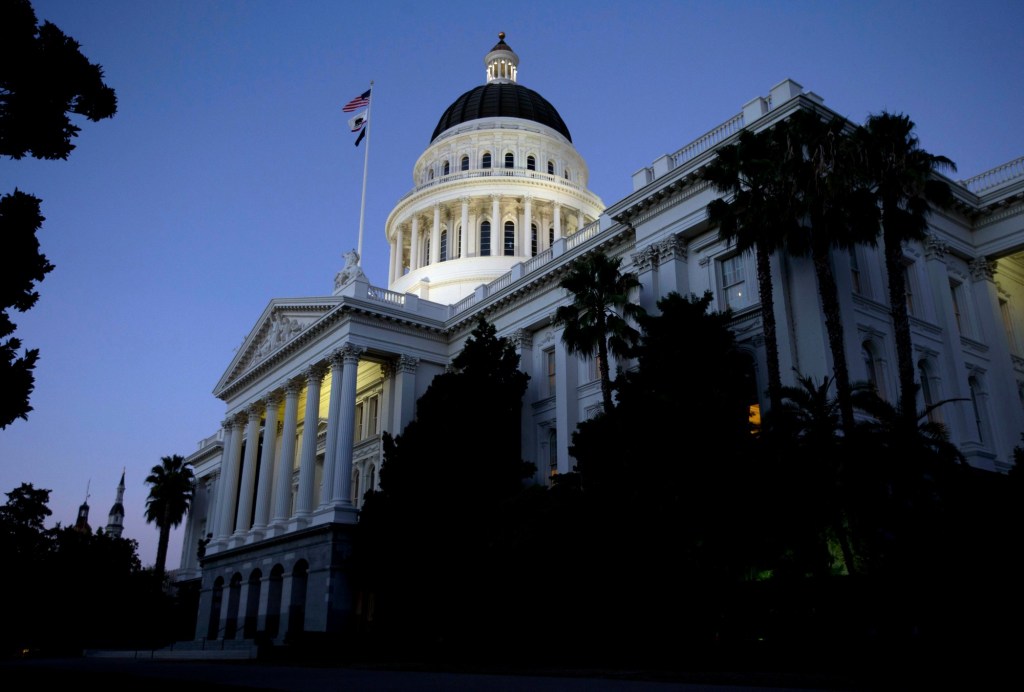Within the late nineteenth and early twentieth centuries, the Southern Pacific Railroad wielded nearly whole management over California’s politics, angering farmers who believed they have been being gouged by excessive freight charges and fueling a strong populist motion.
Farmers’ complaints spawned a number of efforts to control them and at last gave beginning in 1911 to the California Railroad Fee. Only a yr later, the fee’s rate-setting authority was expanded to pure gasoline, electrical energy, phone and water utilities. In 1946, its identify was modified to the California Public Utilities Fee.
The fee’s 5 members, all appointed by the governor, oversee tons of of billions of {dollars} in utility payments every year, issuing its decrees after mind-numbingly advanced authorized and monetary proceedings.
In idea, the CPUC is defending clients of monopolistic utilities. Nevertheless it additionally implements coverage decrees, akin to shifting energy technology to renewable sources, and should – in its rate-setting position – make sure that the regulated utilities earn sufficient revenue to take care of entry to capital and debt markets.
It’s that latter position that comes into play when the CPUC sanctions sharp will increase in electrical energy charges, because it has been doing lately, a lot to the dismay of each residential clients and companies that want electrical energy to outlive.
California households and companies now pay the nation’s highest energy charges, though their precise energy payments are marginally decrease vis-a-vis different states resulting from California’s comparatively temperate local weather.
Thirty-six years in the past, California voters subjected insurance coverage premiums to the identical type of regulation by passing Proposition 103. It shifted the state insurance coverage commissioner from an appointee of the governor to an elected place and gave the workplace new regulatory authority.
The measure’s sponsors promised that regulation would keep a lid on shopper insurance coverage prices and contend that it’s achieved so. Nevertheless, not like electrical utilities, insurers should not monopolies and can’t be compelled to do enterprise in California, so the insurance coverage commissioner has the implicit obligation to additionally keep their profitability so that they proceed to supply protection.
Over the past couple of years, in response to expensive payouts for wildfires, insurers have been leaving the state or refusing to resume insurance policies in fire-prone areas. Left with out insurance coverage, owners have flocked to the insurer of final resort, the California FAIR plan, which not solely has excessive charges however imposes strict limits on protection.
It’s a disaster, affecting not solely present property homeowners, however those that aspire to homeownership and should have insurance coverage to acquire mortgages.
Insurance coverage Commissioner Ricardo Lara has proposed a regulatory overhaul to entice insurers to proceed writing insurance policies in California. It might enable them to incorporate projections of future losses and the prices of reinsurance in premiums and velocity up price change rulings.
Lara is drawing hearth from Shopper Watchdog, whose leaders wrote Prop. 103 and which has acquired thousands and thousands of {dollars} in “intervenor charges” for taking part in rate-setting proceedings. Nevertheless, Lara attracts help from legislators whose constituents are seeing their insurance policies vanish and from Gov. Gavin Newsom. Final week, Newsom endorsed one facet of Lara’s plan by submitting a price range trailer invoice that will, if enacted, velocity up rate-setting instances.
“This proposal requires the Division of Insurance coverage to modernize and streamline its price utility course of to get again to the expedited timelines outlined in Prop. 103,” Alex Stack, a spokesperson for the governor, stated.
What’s occurring underscores how regulators should defend the profitability of the companies they oversee. It’s one thing to bear in mind because the state expands monetary regulation of the well being care trade, which is by far California’s largest financial sector.
Finally there’s no free lunch.
Dan Walters is a CalMatters columnist.
Source link








